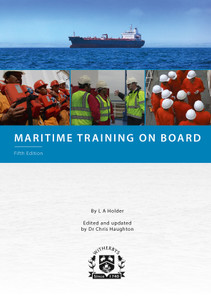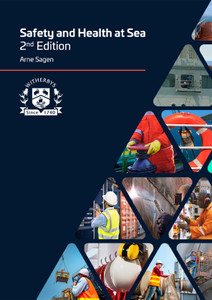
Updated to reflect MEPC 73 (October 2018), this guide contains comprehensive information on marine scrubbers. It outlines both global and regional legislation, attractive scrubber attributes and up to date overviews of the scrubber systems currently on the market.
This publication is a valuable resource that will assist shipowners and operators in complying with the 2020 global sulphur in marine fuel regulations. The functions of various scrubber technologies are described, such as sulphur absorption and separation within the EGCS unit. Guidance is supported by explanatory diagrams and applicable IMO regulations.
Figures for estimated scrubber uptake have been largely based on the projected price and availability of low sulphur fuel. These estimates can be overlaid against the projected operational costs of scrubbers, including the costs of extra fuel, sludge disposal, any chemicals used in the scrubbing process and the maintenance and repair of equipment. This provides an estimated total of around US$45 per ton of bunker fuel scrubbed. Initial costs and financing costs will slightly favour uptake by larger vessels.
In 2017, a survey by The Strategy Works of senior technical managers, OEMs, marine lubricant suppliers and scrubber manufacturers found that 40% of senior technical managers in shipping companies would prefer to use scrubbers to comply with the global sulphur restrictions. Another 2017 survey by the global banking firm UBS Ltd showed different results, with 74% of shipowners planning to use low sulphur fuel for global sulphur cap compliance and 19% planning to install scrubbers. However, the compliance solutions are divided. There is a consensus that the shipping community will employ different solutions (including scrubbers) to be compliant with the 2020 sulphur regulations, and that these will depend on individual circumstances.
?
The charterer and the owner have different responsibilities and this is an important reason why the scrubber market has been slow to take off in specific sectors. Depending on the conditions of the charter party agreement, the cost of fuel may be the responsibility of the operator or the charterer. Since, in some segments of the shipping sector, the contracts in which the charterer is responsible for purchasing the fuel are favoured, pressure could be put on the owners to install scrubbers if the price point for ULSFO is too high. However, the owner would have the considerable initial costs of the scrubber purchase and installation to consider. The installation of a scrubber unit on board a vessel under short term charter (6 months) would not be economic for the charterers, even if it is in the best interests of the owner.
When
a
new
piece
of
major
legislation
is
agreed,
ship/fleet
managers
and
owners
must
consider
many
factors.
These
include
whether
there
are
significant
initial
costs
associated
with
the
changes,
the
likelihood
of
loss
of
hire
during
installation
of
equipment
and
if
there
will
be
potentially
significant
training
and
ongoing
operational
costs.
?
Industry estimates are that the 2020 requirements could add annual total costs in the order of US$50 billion to the shipping industry’s total fuel bill in 2020.
?
It is important to note that a scrubber will allow equivalent compliance with both global (0.50% m/m (mass by mass)) and ECA (0.10% m/m) sulphur in fuel requirements. If the choice is made to use low or ultra-low sulphur fuels, switching will still have to be carried out to ensure compliance in the stricter ECA regions.
Chapter 1 Considerations When Deciding on the Use of Scrubbers
Chapter
2
IMO
Regulations
and
Guidelines
2.1
Global
Legislation
2.2
Regional
IMO
Legislation
2.3
The
2015
Guidelines
for
Exhaust
Gas
Cleaning
Systems
Chapter
3
Domestic
Legislation
3.1
China
Territorial
Waters,
Hong
Kong
and
Taiwan
3.2
The
European
Union
3.3
California
State
Legislation
3.4
Australia
3.5
Turkey
3.6
Panama
Canal
3.7
Legislation
for
the
Discharge
of
Waste
Chapter
4
Factors
Influencing
the
Choice
of
Scrubber
4.1
Costs
4.2
Route
4.3
Ship
Type
and
Space
Available
Onboard
4.4
Energy
Requirements
4.5
Maintenance
Available
and
System
Support
4.6
Crew
Training
and
Safety
4.7
Compliance
4.8
Incentive
Schemes
Chapter
5
Scrubber
Technologies
5.1
Wet
Scrubbers
5.2
Main
Components
of
Wet
Scrubbers
5.3
Configuration
of
the
EGCS
5.4
Water
Flow
Rate
Chapter
6
Certification
6.1
The
2015
Guidelines
for
Exhaust
Gas
Cleaning
Systems
6.2
Class
Society
Approval
Chapter
7
Monitoring
and
Penalties
7.1
Monitoring
Exhaust
Emissions
and
Waste
Water
Quality
7.2
Enforcement
and
Penalties
Chapter
8
Data
Sheets
for
Wet
Scrubbers
8.1
AEC
Maritime
Scrubber
8.2
Alfa
Laval
PureSOx
8.3
Andritz
SeaSOx
Scrubber
8.4
BET
Maritime
SOx
Scrubber
8.5
BlueSulf
EGCS
8.6
CleanSOx
Scrubber
8.7
CROE®
Scrubber
8.8
ECO-EGC™
Scrubber
8.9
Feen
Marine
Exhaust
Gas
Cleaning
System
8.10
Fuji
Electric
SaveBlue
Scrubber
8.11
Hyundai
Materials
Scrubber
8.12
Ionada
Semi-Dry
Scrubber
8.13
LAB
DeepBlueLAB
SOx™
EGCS
8.14
Langh
Tech
Scrubber
8.15
MES
EGCS
8.16
Mitsubishi
Active
Funnel
SOx
Scrubber
8.17
Pacific
Green
Technologies
ENVI-Marine™
Scrubber
8.18
PaSOx™
Scrubber
8.19
PureteQ
Maritime
Turbo
Scrubber
8.20
SAACKE
EGCS-HM
8.21
Viswa
Scrubber
8.22
Wärtsilä
SOx
Scrubber
8.23
Yara
Marine
Scrubber
Witherbys titles are developed using scripts developed by technical experts that are peer reviewed within work groups. Typically, they seek to improve understanding of the regulations, recommendations and guidelines issued by Industry.
Witherbys staff have significant expertise in the fields of navigation and hazardous cargoes as well as in the presentation of complex subjects in a graphic and easy to understand manner.
- Number of Pages:
- 103
- ISBN:
- 9781856098038
- Binding Format:
- Hardback
- Book Height:
- 210 mm
- Book Width:
- 150 mm
- Weight:
- 0.9 kg
- Author:
Witherbys
- Published Date:
- December 2018
- Preview:
- Yes
- Product Catalogue:
- Definitive Guides PDF





